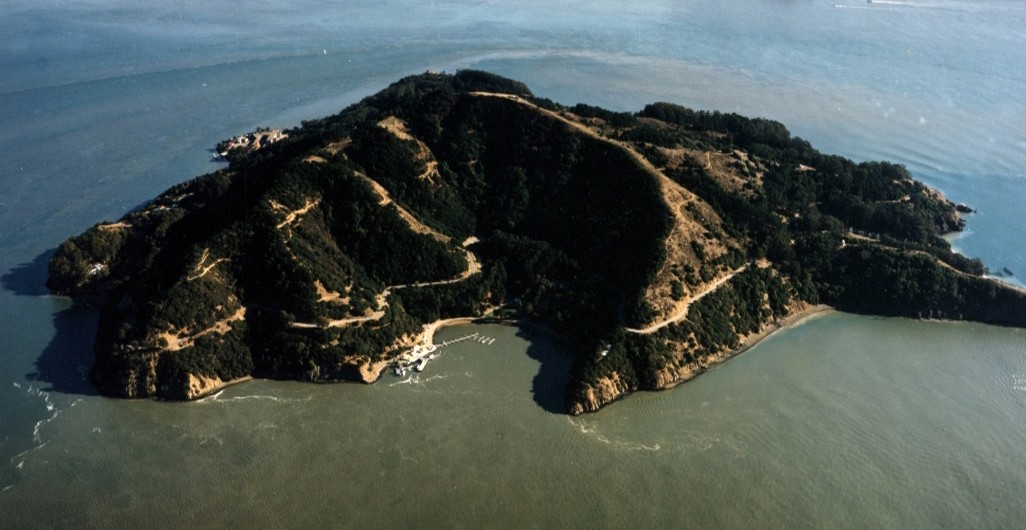
Before the influence of human residence and use, the flora and fauna of Angel Island were very similar to those of nearby mainland areas in Marin County. North- and east-facing slopes were covered with oak woodland, while native grasses and north coast scrub were predominant on west- and south-facing slopes. Indian use of fire almost certainly accounts for the extension of grassland environment and the restriction of forest and brush land that is apparent in early paintings and photographs of the island.
In the nineteenth century, a number of highly aggressive European grasses (mostly annuals) began to replace the native grasses (mostly perennials), and firewood cutters chopped down much of the oak forest on the northeast side of the island. Native trees and shrubs have now recovered to a large extent, and can be found prospering along with a wide variety of introduced plants brought to the island by military personnel and others during the last century.
Oak, bay, and madrone trees, sagebrush, chamise, manzanita, toyon, elderberry, and coyote brush are native to the island. Eucalyptus, Monterey pine, Douglas fir, Monterey cypress, black locust, Australian tea trees, Portuguese cork oaks, and other trees and shrubs were planted on the island by the military. Wildflowers are abundant during the spring.
 Wildflowers: Hound’s Tounge, Milkmaid, Shooting Star and California Poppy.
Wildflowers: Hound’s Tounge, Milkmaid, Shooting Star and California Poppy.
Animal and bird life is wonderfully diverse; both land and seashore species can be seen. Seals and sea lions can sometimes be seen and heard. Deer and raccoons also live on the island. Birds that are often seen include robins, scrub jays, sparrows, juncos, hummingbirds, flickers, hawks, owls, sea gulls, ducks, egrets, grebes, scoters, and kingfishers. Blue herons, pelicans (both brown and white), and many other waterfowl can be seen feeding offshore or flying over the island on their way to feeding grounds in either parts of the bay. Salmon, striped bass, and other fish migrate between the ocean and the Sacramento River Delta through Raccoon Strait.
The island is also notable for the animals that are not found there. For example, there are no squirrels, rabbits, foxes, skunks, opossums, or coyotes.
 The beaches at Quarry Point and Ayala Cove are both sandy and protected from the afternoon breezes that so often blow in from the ocean through the Golden Gate.
The beaches at Quarry Point and Ayala Cove are both sandy and protected from the afternoon breezes that so often blow in from the ocean through the Golden Gate.
Quarry Beach, on the east side of the Island at Ft. McDowell (aka East Garrison), is especially pleasant for sunbathing.
Perle’s Beach, on the southwest side of the island past Camp Reynolds, is considerably rougher water, and the beach is more exposed to the wind and weather. The view, however, is spectacular, and is a delightful place for walking and general beach combing.
There are no lifeguards and swimming can be hazardous because of poor water quality and the very strong currents that run past the island with each change of tide.
Our Community. Our Island. Our Legacy.
Angel Island Conservancy// PO Box 866 / Tiburon / CA 94920// info@angelisland.org// Tax ID No. 51-0152954// FACEBOOK// FLICKR// INSTAGRAM